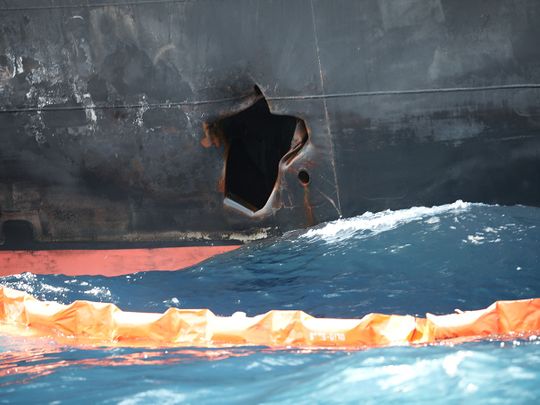
Recently, the global oil markets witnessed a series of developments, not least being the fluctuations in prices. It is also apparent that tensions and conflicts of interest are flaring not only between exporting and consuming countries, as is usual, but between exporting countries themselves.
This was the result of the differing views over US sanctions on Iran’s oil exports, which aim to press Iran to stop interfering in other countries’ affairs and financing terrorism through proxy agents, as well as stop its nuclear and missile programme. Unlike Iran’s expectations that oil prices could jump over $100 per barrel if sanctions are imposed without exemptions, prices fell by 14 per cent in just two weeks, provoking the anger of the mullah regime.
This prompted Iran to over-react — stupidly — by directing attacks on oil tankers in a desperate attempt to raise oil prices and reignite the fears of consuming nations, in particular. We have said before that exporting countries from within and outside Opec would be able to quickly fill the gap left by Iranian oil and this happened faster than expected so that Iran fell outside of the “oil equation” and lost sources of income on which it relies heavily.
Therefore, any measure taken by Tehran to hike oil prices through acts of sabotage will not be successful. This is in part because Iran’s tactics have become exposed to the world, as evidenced by the current price stability following the bombings of two oil tankers in the Gulf of Oman last week. This led to an immediate reaction in oil markets of rising prices, but only for a short time before dropping again.
In addition, there is another goal Iran seeks to achieve, which is trying to get more revenues from its exports of oil. It strives to raise prices to compensate for losing the export of two million barrels per day due to sanctions. However, the ongoing developments are against what Tehran wants. Oil supplies are enough to cover global demand and the markets remain balanced.
There is also an important factor that may contribute to further dropping prices, related to the Opec+1 agreement, which may or may not be renewed at the joint meeting next month. Saudi Arabia, the world’s largest oil exporter, has already reduced oil production from 10.3- to 9.65 million barrels per day in May to decrease the surplus in the market.
In contrast, Russia, which leads non-Opec producers, has not yet made up its mind, as Russian officials have a different perspective. Some are in favour of no new cuts because they are convinced the US will take Russia’s share of the market. Others believe it is so important to adhere to the cuts in oil production as per the earlier Opec+1 agreement, led by Saudi Arabia and Russia.
In the event that an agreement is not renewed, it will lead to oversupply, despite a significant drop in Iranian oil exports, which would cause further price declines and deepen the Iranian regime’s crises, whose losses (in terms of export volumes and revenues) will be doubled. If the current tensions between the US and Iran in the Arabian Gulf worsen and develop into armed conflicts — though both sides do not intend to do so — oil prices might rise significantly, but temporarily. All possibilities are likely in the coming period.
The geopolitical and economic factors as well as conflicts of interest between the signatories of the Opec+1 agreement will contribute to sharp fluctuations in the oil markets and on prices. This is the fact the mullah regime needs to understand very well — Oil supplies from the Gulf represent a global economic and security issue and no one would be allowed to threaten this, including countries sympathetic to Iran as a result of Tehran’s twisted deception with some international actors.
Dr Mohammad Al Asoomi is a UAE economic expert and specialist in economic and social development in the UAE and the GCC countries.












